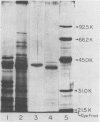Abstract
Heat-labile elicitors of phytoalexin accumulation in soybeans (Glycine max L. Merr. cv Wayne) were detected in culture filtrates of Erwinia carotovora grown on a defined medium containing citrus pectin as the sole carbon source. The heat-labile elicitors were highly purified by cation-exchange chromatography on a CM-Sephadex (C-50) column, followed by agarose-affinity chromatography on a Bio-Gel A-0.5m gel filtration column. The heat-labile elicitor activity co-purified with two α-1,4-endopolygalacturonic acid lyases (EC 4·2·2·2). Endopolygalacturonic acid lyase activity appeared to be necessary for elicitor activity because heat-inactivated enzyme preparations did not elicit phytoalexins. The purified endopolygalacturonic acid lyases elicited pterocarpan phytoalexins at microbial-inhibitory concentrations in the soybean-cotyledon bioassay when applied at a concentration of 55 nanograms per milliliter (1 × 10−9 molar). One of these lyases released heat-stable elicitors from soybean cell walls, citrus pectin, and sodium polypectate. The heat-stable elicitor-active material solubilized from soybean cell walls by the lyase was composed of at least 90% (w/v) uronosyl residues. These results demonstrate that endopolygalacturonic acid lyase elicits phytoalexin accumulation by releasing fragments from pectic polysaccharides in plant cell walls.
Full text
PDF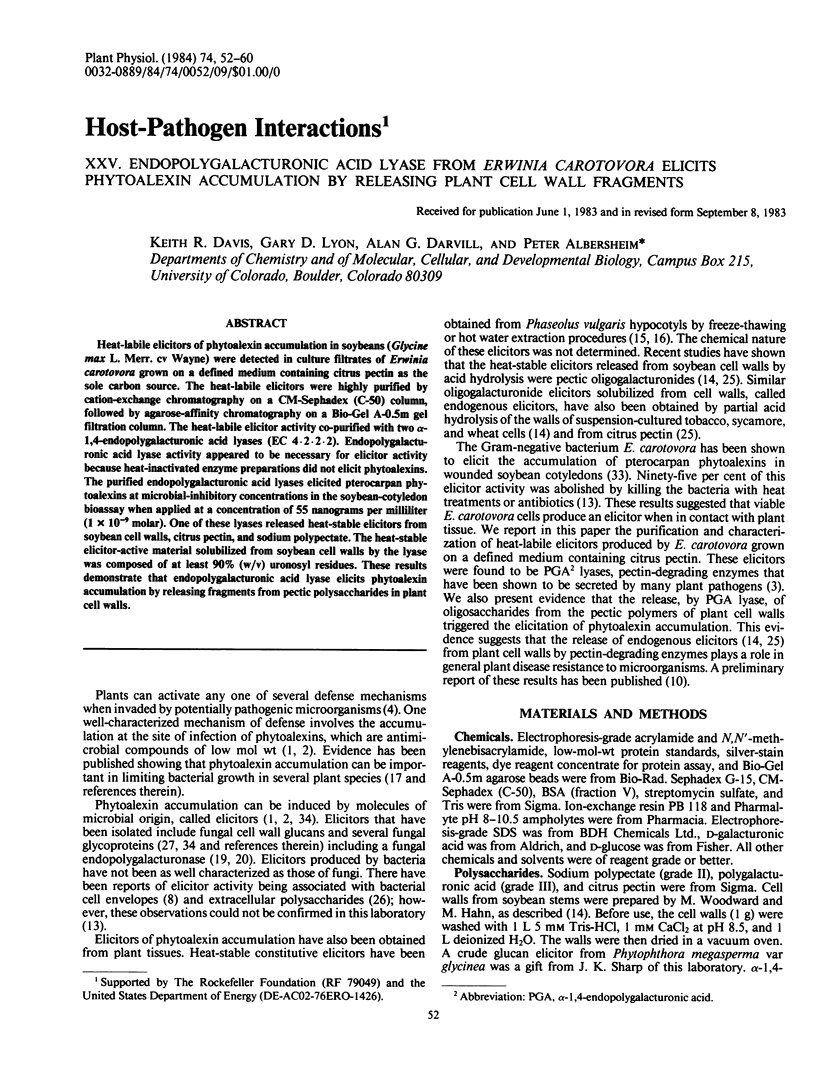
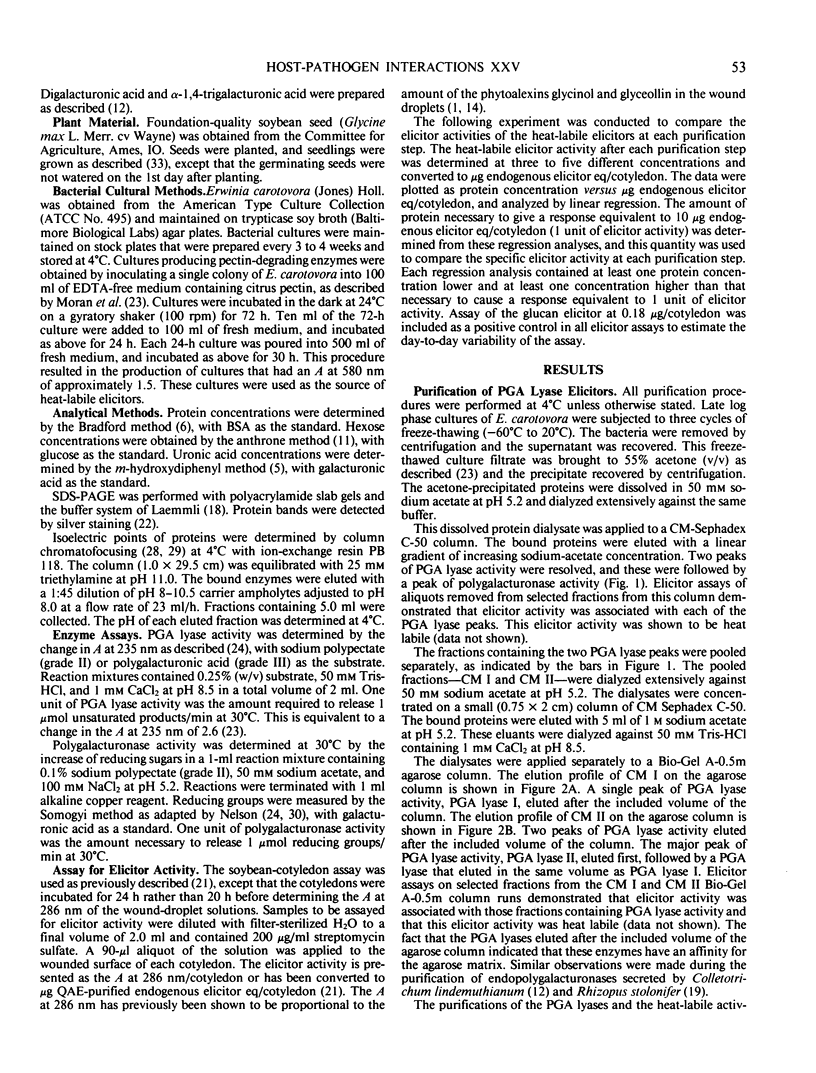
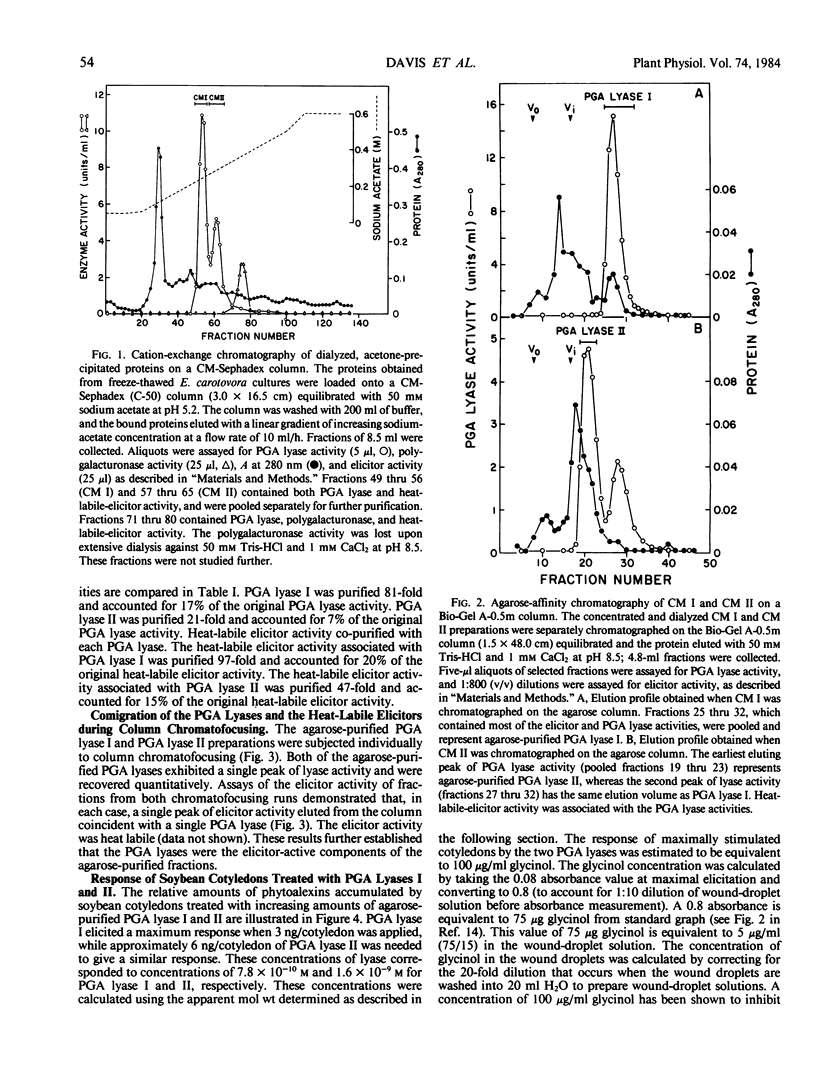
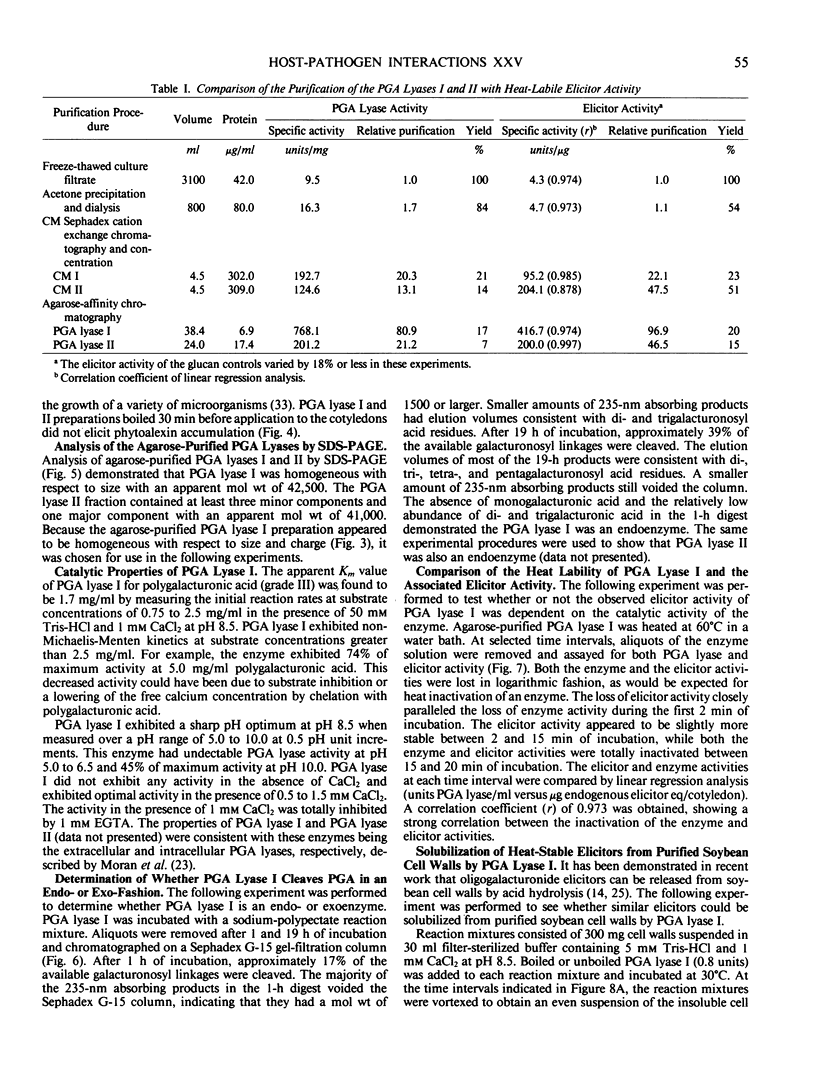
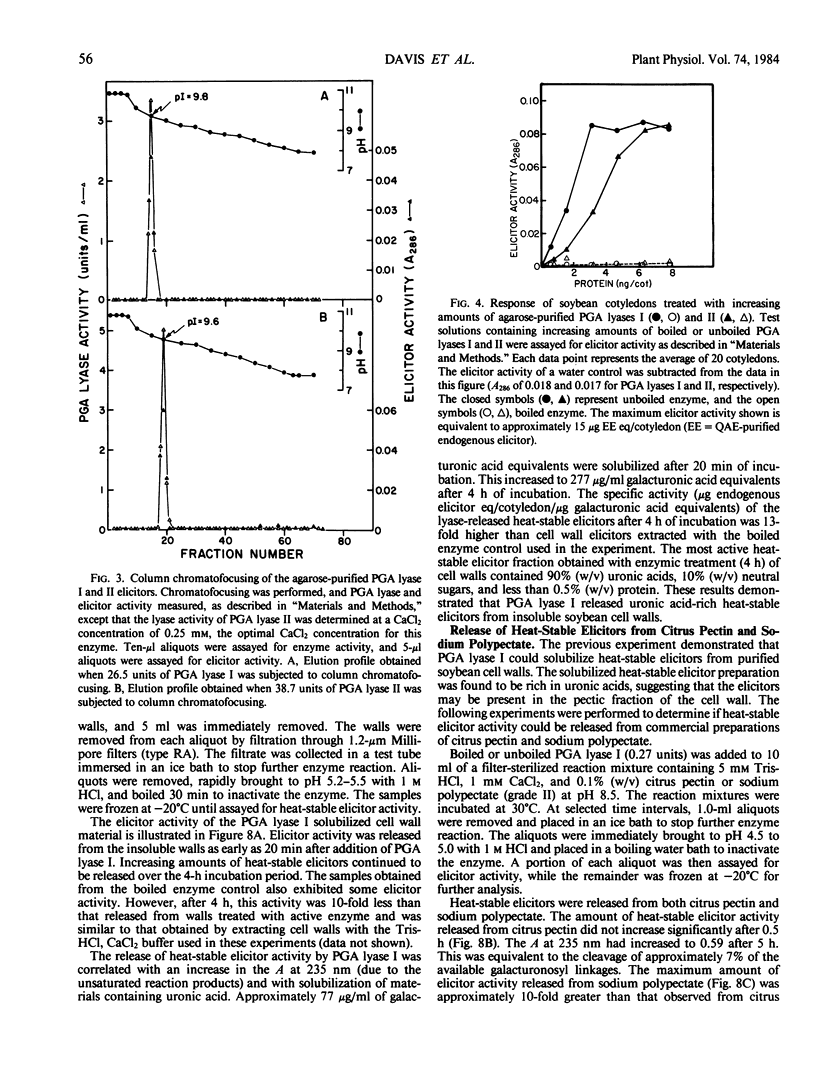
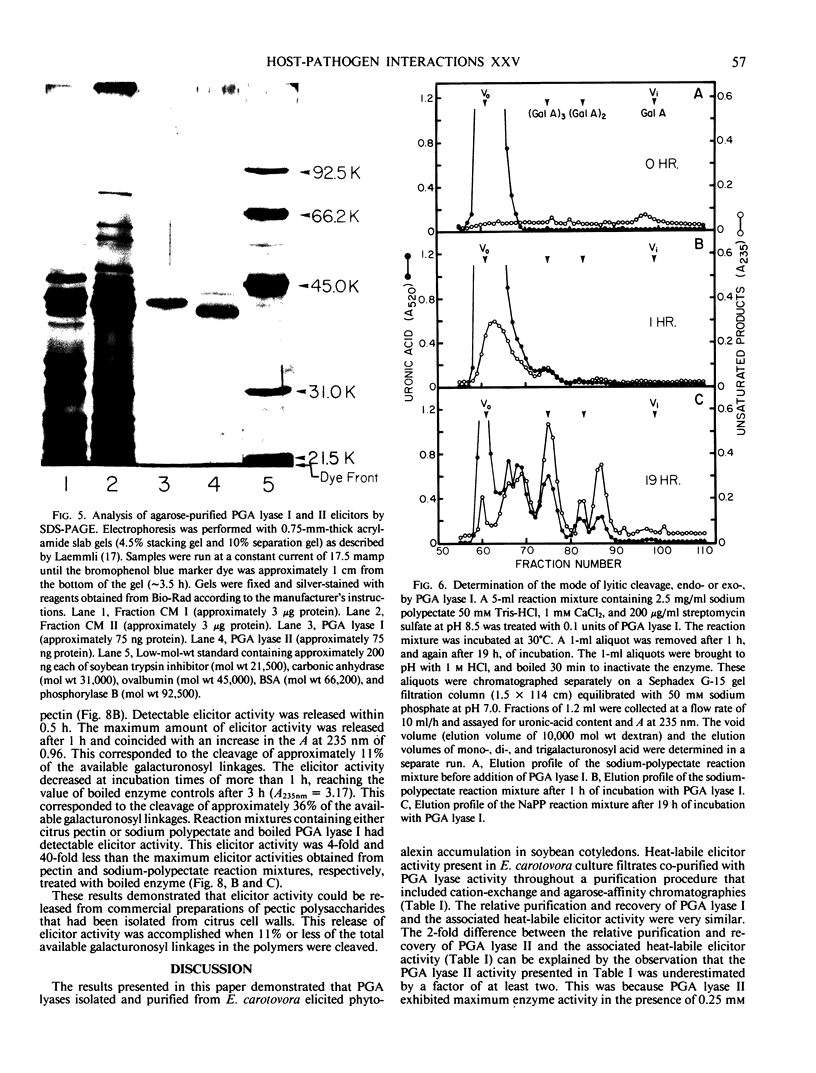
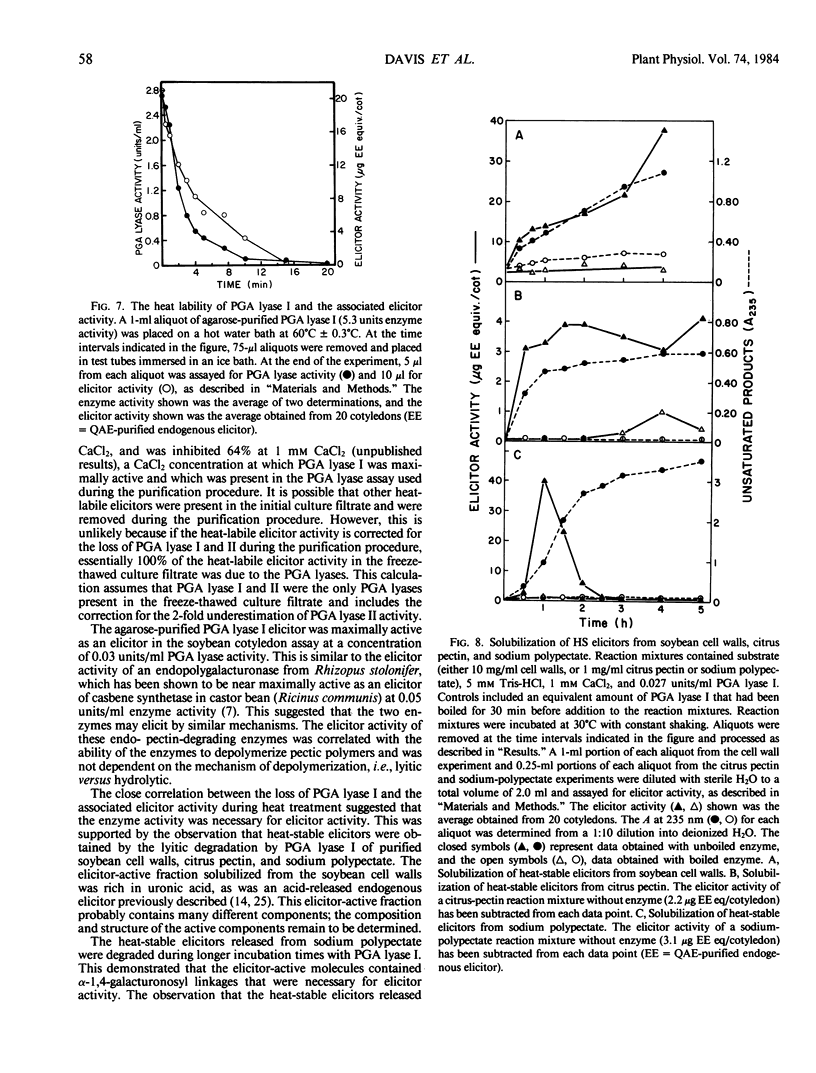
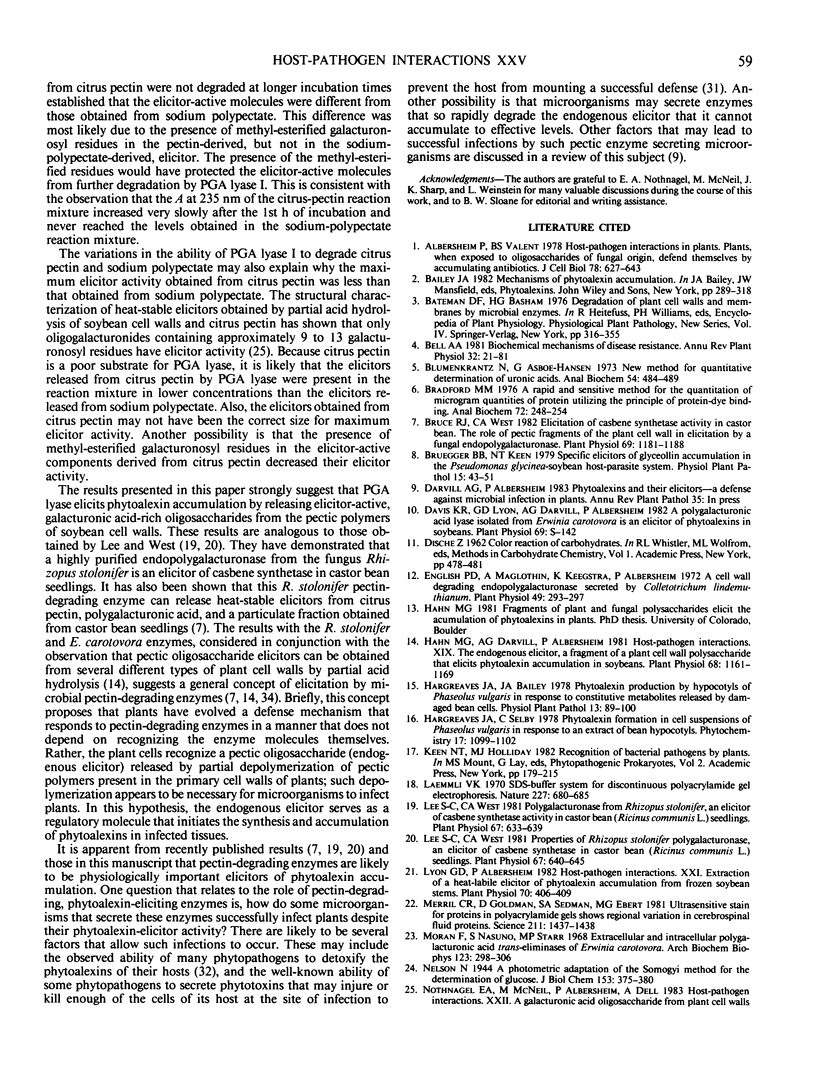
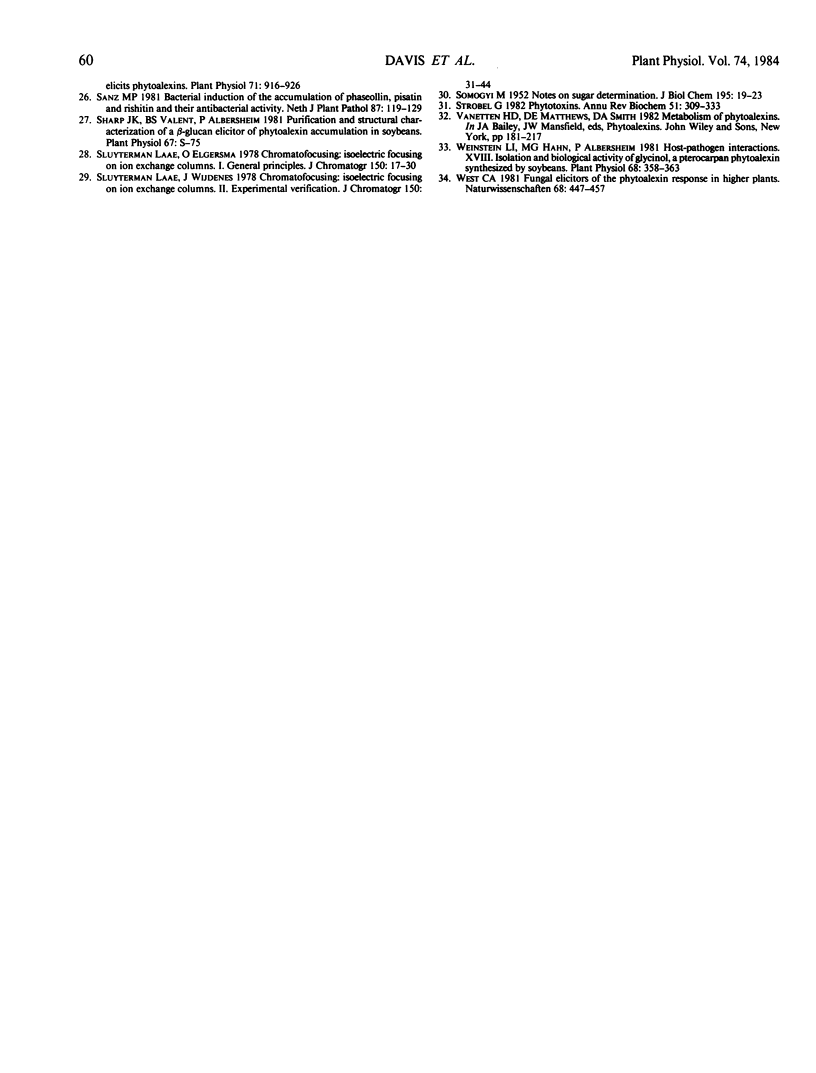
Images in this article
Selected References
These references are in PubMed. This may not be the complete list of references from this article.
- Albersheim P., Valent B. S. Host-pathogen interactions in plants. Plants, when exposed to oligosaccharides of fungal origin, defend themselves by accumulating antibiotics. J Cell Biol. 1978 Sep;78(3):627–643. doi: 10.1083/jcb.78.3.627. [DOI] [PMC free article] [PubMed] [Google Scholar]
- Blumenkrantz N., Asboe-Hansen G. New method for quantitative determination of uronic acids. Anal Biochem. 1973 Aug;54(2):484–489. doi: 10.1016/0003-2697(73)90377-1. [DOI] [PubMed] [Google Scholar]
- Bradford M. M. A rapid and sensitive method for the quantitation of microgram quantities of protein utilizing the principle of protein-dye binding. Anal Biochem. 1976 May 7;72:248–254. doi: 10.1016/0003-2697(76)90527-3. [DOI] [PubMed] [Google Scholar]
- Bruce R. J., West C. A. Elicitation of Casbene Synthetase Activity in Castor Bean : THE ROLE OF PECTIC FRAGMENTS OF THE PLANT CELL WALL IN ELICITATION BY A FUNGAL ENDOPOLYGALACTURONASE. Plant Physiol. 1982 May;69(5):1181–1188. doi: 10.1104/pp.69.5.1181. [DOI] [PMC free article] [PubMed] [Google Scholar]
- English P. D., Maglothin A., Keegstra K., Albersheim P. A Cell Wall-degrading Endopolygalacturonase Secreted by Colletotrichum lindemuthianum. Plant Physiol. 1972 Mar;49(3):293–298. doi: 10.1104/pp.49.3.293. [DOI] [PMC free article] [PubMed] [Google Scholar]
- Hahn M. G., Darvill A. G., Albersheim P. Host-Pathogen Interactions : XIX. THE ENDOGENOUS ELICITOR, A FRAGMENT OF A PLANT CELL WALL POLYSACCHARIDE THAT ELICITS PHYTOALEXIN ACCUMULATION IN SOYBEANS. Plant Physiol. 1981 Nov;68(5):1161–1169. doi: 10.1104/pp.68.5.1161. [DOI] [PMC free article] [PubMed] [Google Scholar]
- Laemmli U. K. Cleavage of structural proteins during the assembly of the head of bacteriophage T4. Nature. 1970 Aug 15;227(5259):680–685. doi: 10.1038/227680a0. [DOI] [PubMed] [Google Scholar]
- Lee S. C., West C. A. Polygalacturonase from Rhizopus stolonifer, an Elicitor of Casbene Synthetase Activity in Castor Bean (Ricinus communis L.) Seedlings. Plant Physiol. 1981 Apr;67(4):633–639. doi: 10.1104/pp.67.4.633. [DOI] [PMC free article] [PubMed] [Google Scholar]
- Lee S. C., West C. A. Properties of Rhizopus stolonifer Polygalacturonase, an Elicitor of Casbene Synthetase Activity in Castor Bean (Ricinus communis L.) Seedlings. Plant Physiol. 1981 Apr;67(4):640–645. doi: 10.1104/pp.67.4.640. [DOI] [PMC free article] [PubMed] [Google Scholar]
- Lilley R. M. Isolation of Functionally Intact Rhodoplasts from Griffithsia monilis (Ceramiaceae, Rhodophyta). Plant Physiol. 1981 Jan;67(1):5–8. doi: 10.1104/pp.67.1.5. [DOI] [PMC free article] [PubMed] [Google Scholar]
- Lyon G. D., Albersheim P. Host-Pathogen Interactions : XXI. Extraction of a Heat-Labile Elicitor of Phytoalexin Accumulation from Frozen Soybean Stems. Plant Physiol. 1982 Aug;70(2):406–409. doi: 10.1104/pp.70.2.406. [DOI] [PMC free article] [PubMed] [Google Scholar]
- Merril C. R., Goldman D., Sedman S. A., Ebert M. H. Ultrasensitive stain for proteins in polyacrylamide gels shows regional variation in cerebrospinal fluid proteins. Science. 1981 Mar 27;211(4489):1437–1438. doi: 10.1126/science.6162199. [DOI] [PubMed] [Google Scholar]
- Moran F., Nasuno S., Starr M. P. Extracellular and intracellular polygllacturonic acid trans-eliminases of Erwinia carotovora. Arch Biochem Biophys. 1968 Feb;123(2):298–306. doi: 10.1016/0003-9861(68)90138-0. [DOI] [PubMed] [Google Scholar]
- Nothnagel E. A., McNeil M., Albersheim P., Dell A. Host-Pathogen Interactions : XXII. A Galacturonic Acid Oligosaccharide from Plant Cell Walls Elicits Phytoalexins. Plant Physiol. 1983 Apr;71(4):916–926. doi: 10.1104/pp.71.4.916. [DOI] [PMC free article] [PubMed] [Google Scholar]
- Strobel G. A. Phytotoxins. Annu Rev Biochem. 1982;51:309–333. doi: 10.1146/annurev.bi.51.070182.001521. [DOI] [PubMed] [Google Scholar]
- Weinstein L. I., Hahn M. G., Albersheim P. Host-Pathogen Interactions : XVIII. ISOLATION AND BIOLOGICAL ACTIVITY OF GLYCINOL, A PTEROCARPAN PHYTOALEXIN SYNTHESIZED BY SOYBEANS. Plant Physiol. 1981 Aug;68(2):358–363. doi: 10.1104/pp.68.2.358. [DOI] [PMC free article] [PubMed] [Google Scholar]



